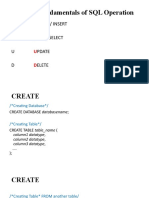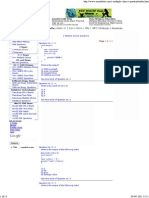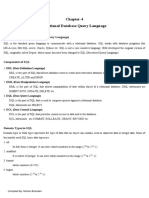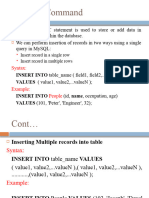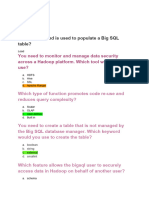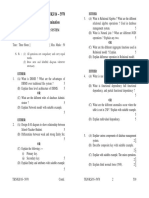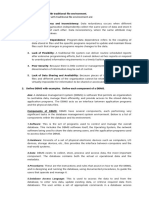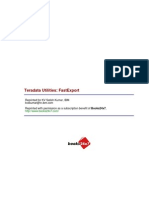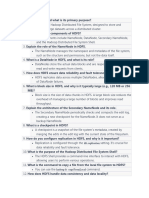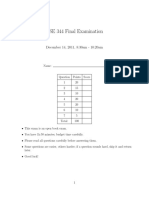0% found this document useful (0 votes)
124 views35 pagesBasic CRUD Operations, F Unctions, Expressions An D Clauses
The document discusses various SQL concepts including:
1. DDL, DML, queries, clauses, aggregate functions, string functions, GROUP BY, HAVING, and rank functions.
2. It provides examples of WHERE clauses, AND/IN operators, aggregate functions like COUNT and SUM, and GROUP BY clauses.
3. The HAVING clause is used with GROUP BY to return rows where conditions are true, and RANK functions assign ranks to rows within partitions.
Uploaded by
geethanjaliCopyright
© © All Rights Reserved
We take content rights seriously. If you suspect this is your content, claim it here.
Available Formats
Download as PPTX, PDF, TXT or read online on Scribd
0% found this document useful (0 votes)
124 views35 pagesBasic CRUD Operations, F Unctions, Expressions An D Clauses
The document discusses various SQL concepts including:
1. DDL, DML, queries, clauses, aggregate functions, string functions, GROUP BY, HAVING, and rank functions.
2. It provides examples of WHERE clauses, AND/IN operators, aggregate functions like COUNT and SUM, and GROUP BY clauses.
3. The HAVING clause is used with GROUP BY to return rows where conditions are true, and RANK functions assign ranks to rows within partitions.
Uploaded by
geethanjaliCopyright
© © All Rights Reserved
We take content rights seriously. If you suspect this is your content, claim it here.
Available Formats
Download as PPTX, PDF, TXT or read online on Scribd
/ 35

